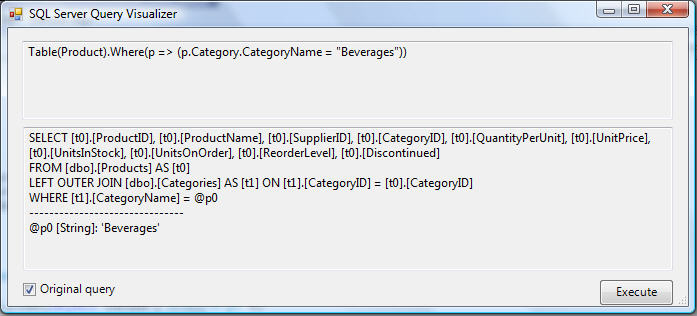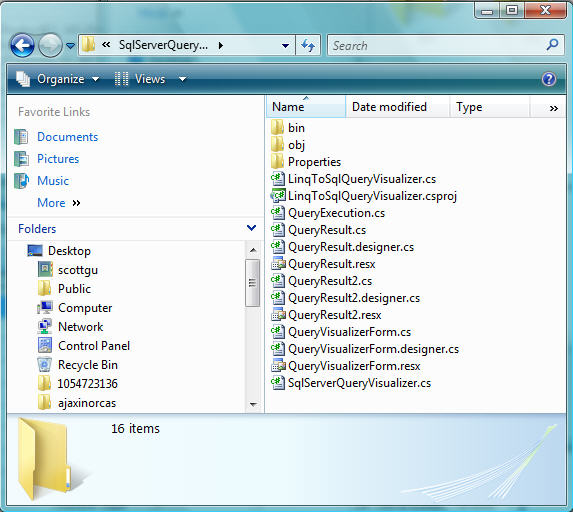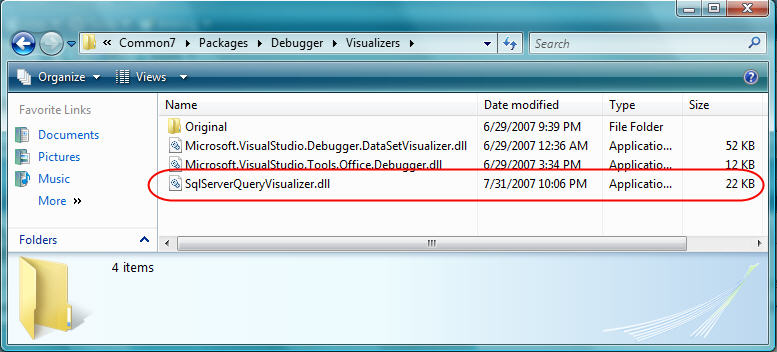前言
最近在学习Web Api框架的时候接触到了async/await,这个特性是.NET 4.5引入的,由于之前对于异步编程不是很了解,所以花费了一些时间学习一下相关的知识,并整理成这篇博客,如果在阅读的过程中发现不对的地方,欢迎大家指正。
同步编程与异步编程
通常情况下,我们写的C#代码就是同步的,运行在同一个线程中,从程序的第一行代码到最后一句代码顺序执行。而异步编程的核心是使用多线程,通过让不同的线程执行不同的任务,实现不同代码的并行运行。
前台线程与后台线程
关于多线程,早在.NET2.0时代,基础类库中就提供了Thread实现。默认情况下,实例化一个Thread创建的是前台线程,只要有前台线程在运行,应用程序的进程就一直处于运行状态,以控制台应用程序为例,在Main方法中实例化一个Thread,这个Main方法就会等待Thread线程执行完毕才退出。而对于后台线程,应用程序将不考虑其是否执行完毕,只要应用程序的主线程和前台线程执行完毕就可以退出,退出后所有的后台线程将被自动终止。来看代码应该更清楚一些:
using System;
using System.Collections.Generic;
using System.Linq;
using System.Text;
using System.Threading;
using System.Threading.Tasks;
namespace ConsoleApp
{
class Program
{
static void Main(string[] args)
{
Console.WriteLine("主线程开始");
//实例化Thread,默认创建前台线程
Thread t1 = new Thread(DoRun1);
t1.Start();
//可以通过修改Thread的IsBackground,将其变为后台线程
Thread t2 = new Thread(DoRun2) { IsBackground = true };
t2.Start();
Console.WriteLine("主线程结束");
}
static void DoRun1()
{
Thread.Sleep(500);
Console.WriteLine("这是前台线程调用");
}
static void DoRun2()
{
Thread.Sleep(1500);
Console.WriteLine("这是后台线程调用");
}
}
}运行上面的代码,可以看到DoRun2方法的打印信息“这是后台线程调用”将不会被显示出来,因为应用程序执行完主线程和前台线程后,就自动退出了,所有的后台线程将被自动终止。这里后台线程设置了等待1.5s,假如这个后台线程比前台线程或主线程提前执行完毕,对应的信息“这是后台线程调用”将可以被成功打印出来。
Task
.NET 4.0推出了新一代的多线程模型Task。async/await特性是与Task紧密相关的,所以在了解async/await前必须充分了解Task的使用。这里将以一个简单的Demo来看一下Task的使用,同时与Thread的创建方式做一下对比。
using System;
using System.Collections.Generic;
using System.Linq;
using System.Text;
using System.Web;
using System.Threading;
using System.Threading.Tasks;
namespace TestApp
{
class Program
{
static void Main(string[] args)
{
Console.WriteLine("主线程启动");
//.NET 4.5引入了Task.Run静态方法来启动一个线程
Task.Run(() => { Thread.Sleep(1000); Console.WriteLine("Task1启动"); });
//Task启动的是后台线程,假如要在主线程中等待后台线程执行完毕,可以调用Wait方法
Task task = Task.Run(() => { Thread.Sleep(500); Console.WriteLine("Task2启动"); });
task.Wait();
Console.WriteLine("主线程结束");
}
}
}首先,必须明确一点是Task启动的线程是后台线程,不过可以通过在Main方法中调用task.Wait()方法,使应用程序等待task执行完毕。Task与Thread的一个重要区分点是:Task底层是使用线程池的,而Thread每次实例化都会创建一个新的线程。这里可以通过这段代码做一次验证:
using System;
using System.Collections.Generic;
using System.Linq;
using System.Text;
using System.Web;
using System.Threading;
using System.Threading.Tasks;
namespace TestApp
{
class Program
{
static void DoRun1()
{
Console.WriteLine("Thread Id =" + Thread.CurrentThread.ManagedThreadId);
}
static void DoRun2()
{
Thread.Sleep(50);
Console.WriteLine("Task调用Thread Id =" + Thread.CurrentThread.ManagedThreadId);
}
static void Main(string[] args)
{
for (int i = 0; i < 50; i++)
{
new Thread(DoRun1).Start();
}
for (int i = 0; i < 50; i++)
{
Task.Run(() => { DoRun2(); });
}
//让应用程序不立即退出
Console.Read();
}
}
}运行代码,可以看到DoRun1()方法每次的Thread Id都是不同的,而DoRun2()方法的Thread Id是重复出现的。我们知道线程的创建和销毁是一个开销比较大的操作,Task.Run()每次执行将不会立即创建一个新线程,而是到CLR线程池查看是否有空闲的线程,有的话就取一个线程处理这个请求,处理完请求后再把线程放回线程池,这个线程也不会立即撤销,而是设置为空闲状态,可供线程池再次调度,从而减少开销。
Task<TResult>
Task<TResult>是Task的泛型版本,这两个之间的最大不同是Task<TResult>可以有一个返回值,看一下代码应该一目了然:
using System;
using System.Collections.Generic;
using System.Linq;
using System.Text;
using System.Web;
using System.Threading;
using System.Threading.Tasks;
namespace TestApp
{
class Program
{
static void Main(string[] args)
{
Console.WriteLine("主线程开始");
Task task = Task.Run(() => { Thread.Sleep(1000); return Thread.CurrentThread.ManagedThreadId.ToString(); });
Console.WriteLine(task.Result);
Console.WriteLine("主线程结束");
}
}
}Task<TResult>的实例对象有一个Result属性,当在Main方法中调用task.Result的时候,将等待task执行完毕并得到返回值,这里的效果跟调用task.Wait()是一样的,只是多了一个返回值。
async/await 特性
经过前面的铺垫,终于迎来了这篇文章的主角async/await,还是先通过代码来感受一下这两个特性的使用。
using System;
using System.Collections.Generic;
using System.Linq;
using System.Text;
using System.Web;
using System.Threading;
using System.Threading.Tasks;
namespace TestApp
{
class Program
{
static void Main(string[] args)
{
Console.WriteLine("-------主线程启动-------");
Task task = GetLengthAsync();
Console.WriteLine("Main方法做其他事情");
Console.WriteLine("Task返回的值" + task.Result);
Console.WriteLine("-------主线程结束-------");
}
static async Task GetLengthAsync()
{
Console.WriteLine("GetLengthAsync Start");
string str = await GetStringAsync();
Console.WriteLine("GetLengthAsync End");
return str.Length;
}
static Task GetStringAsync()
{
return Task.Run(() => { Thread.Sleep(2000); return "finished"; });
}
}
}首先来看一下async关键字。async用来修饰方法,表明这个方法是异步的,声明的方法的返回类型必须为:void或Task或Task<TResult>。返回类型为Task的异步方法中无需使用return返回值,而返回类型为Task<TResult>的异步方法中必须使用return返回一个TResult的值,如上述Demo中的异步方法返回一个int。而返回类型可为void,则是为了和事件处理程序兼容,比如下面的示例:
public Form1()
{
InitializeComponent();
btnDo.Click += Down;
}
public async void Down(object sender, EventArgs e)
{
btnDo.Enabled = false;
string str = await Run();
labText.Text = str;
btnDo.Enabled = true;
}
public Task Run()
{
return Task.Run(() => { Thread.Sleep(5000); return DateTime.Now.ToString(); });
}再来看一下await关键字。await必须用来修饰Task或Task<TResult>,而且只能出现在已经用async关键字修饰的异步方法中。
通常情况下,async/await必须成对出现才有意义,假如一个方法声明为async,但却没有使用await关键字,则这个方法在执行的时候就被当作同步方法,这时编译器也会抛出警告提示async修饰的方法中没有使用await,将被作为同步方法使用。了解了关键字async\await的特点后,我们来看一下上述Demo在控制台会输入什么吧。

输出的结果已经很明确地告诉我们整个执行流程了。GetLengthAsync异步方法刚开始是同步执行的,所以"GetLengthAsync Start"字符串会被打印出来,直到遇到第一个await关键字,真正的异步任务GetStringAsync开始执行,await相当于起到一个标记/唤醒点的作用,同时将控制权放回给Main方法,"Main方法做其他事情"字符串会被打印出来。之后由于Main方法需要访问到task.Result,所以就会等待异步方法GetLengthAsync的执行,而GetLengthAsync又等待GetStringAsync的执行,一旦GetStringAsync执行完毕,就会回到await GetStringAsync这个点上执行往下执行,这时"GetLengthAsync End"字符串就会被打印出来。
当然,我们也可以使用下面的方法完成上面控制台的输出。
using System;
using System.Collections.Generic;
using System.Linq;
using System.Text;
using System.Web;
using System.Threading;
using System.Threading.Tasks;
namespace TestApp
{
class Program
{
static void Main(string[] args)
{
Console.WriteLine("-------主线程启动-------");
Task task = GetLengthAsync();
Console.WriteLine("Main方法做其他事情");
Console.WriteLine("Task返回的值" + task.Result);
Console.WriteLine("-------主线程结束-------");
}
static Task GetLengthAsync()
{
Console.WriteLine("GetLengthAsync Start");
Task task = Task.Run(() => { string str = GetStringAsync().Result;
Console.WriteLine("GetLengthAsync End");
return str.Length; });
return task;
}
static Task GetStringAsync()
{
return Task.Run(() => { Thread.Sleep(2000); return "finished"; });
}
}
}对比两种方法,是不是async\await关键字的原理其实就是通过使用一个线程完成异步调用吗?答案是否定的。async关键字表明可以在方法内部使用await关键字,方法在执行到await前都是同步执行的,运行到await处就会挂起,并返回到Main方法中,直到await标记的Task执行完毕,才唤醒回到await点上,继续向下执行。更深入点的介绍可以查看文章末尾的参考文献。
async/await 实际应用
微软已经对一些基础类库的方法提供了异步实现,接下来将实现一个例子来介绍一下async/await的实际应用。
using System;
using System.Collections.Generic;
using System.Linq;
using System.Text;
using System.Web;
using System.Threading;
using System.Threading.Tasks;
using System.Net;
namespace TestApp
{
class Program
{
static void Main(string[] args)
{
Console.WriteLine("开始获取博客园首页字符数量");
Task task1 = CountCharsAsync("http://www.cnblogs.com");
Console.WriteLine("开始获取百度首页字符数量");
Task task2 = CountCharsAsync("http://www.baidu.com");
Console.WriteLine("Main方法中做其他事情");
Console.WriteLine("博客园:" + task1.Result);
Console.WriteLine("百度:" + task2.Result);
}
static async Task CountCharsAsync(string url)
{
WebClient wc = new WebClient();
string result = await wc.DownloadStringTaskAsync(new Uri(url));
return result.Length;
}
}
}参考文献:<IIIustrated C# 2012> 关于async/await的FAQ 《深入理解C#》
问题描述:
当我们的界面需要在程序运行中不断更新数据时,当一个textbox的数据需要变化时,为了让程序执行中不出现界面卡死的现像,最好的方法就是多线程来解决
一个主线程来创建界面,使用一个子线程来执行程序并更新主界面
这样就不会出现卡死的现像了
这肯定是没有问题的,
但是为什么在使用的过程中一样会有很多地方会出现卡死呢,而且有用户跟我说是我的Httphelper类的问题,其实不是,而且我再次声明我的Httphelper类跟多线程并没有关系。不要在诬赖我了哦。
这个问题其实也困或了我很久,但是今天终于解决了,而且我发现很多人有这样的问题,所以我分享一个例子方便大家参考吧。
先来看看我的界面

当我单击
开始执行后

这个时候界面是不会卡死的,
只是数据在不断的更新
下面看看我的代码
using System;
using System.Collections.Generic;
using System.ComponentModel;
using System.Data;
using System.Drawing;
using System.Linq;
using System.Text;
using System.Windows.Forms;
using System.Threading;
namespace WindowsFormsApplication3
{
public partial class Form1 : Form
{
public Form1()
{
InitializeComponent();
}
//创建一个委托,是为访问TextBox控件服务的。
public delegate void UpdateTxt(string msg);
//定义一个委托变量
public UpdateTxt updateTxt;
//修改TextBox值的方法。
public void UpdateTxtMethod(string msg)
{
richTextBox1.AppendText(msg + "\r\n");
richTextBox1.ScrollToCaret();
}
//此为在非创建线程中的调用方法,其实是使用TextBox的Invoke方法。
public void ThreadMethodTxt(int n)
{
this.BeginInvoke(updateTxt, "线程开始执行,执行" + n + "次,每一秒执行一次");
for (int i = 0; i < n; i++)
{
this.BeginInvoke(updateTxt, i.ToString());
//一秒 执行一次
Thread.Sleep(1000);
}
this.BeginInvoke(updateTxt, "线程结束");
}
//开启线程
private void button1_Click(object sender, EventArgs e)
{
Thread objThread = new Thread(new ThreadStart(delegate
{
ThreadMethodTxt(Convert.ToInt32(textBox1.Text.Trim()));
}));
objThread.Start();
}
private void Form1_Load_1(object sender, EventArgs e)
{
//实例化委托
updateTxt = new UpdateTxt(UpdateTxtMethod);
}
}
}
就这些代码,大家看注释应该就明白一点了,
主要是使用一个委托来更新界面的richTextBox1
这样写是肯定没有问题的,而且在我其它的更高级一点的例子里也是这么写的
C#多线程|匿名委托传参数|测试网站压力--升级版
http://www.sufeinet.com/thread-13-1-1.html
上面的文件大家可以做为参考
那问题现在那里呢,其实就出在这一句上
this.BeginInvoke(updateTxt, "线程结束");
大家也许已经发现了,我是这样写的,而不是
updateTxt("线程结束");
这样来直接在子线程中使用,
我相信有很多同志都是这样写的,其实错就错在这里
如果直接使用
updateTxt("线程结束");
大家想一下应该就明白了,
updateTxt是在主线程创建的,而我们在子线程中直接使用,运行的数据多了,就会出现卡死,这是界面信息堵死的原因,
所以就算是委托也不能直接在子线程中使用,而是要使用BeginInvoke方法来调用这个委托
这样才不会出现卡死的现像。
问题就解决了。
大家支持一下哦
下面是我的源码提供给大家下载吧
 WindowsFormsApplication3.zip (49.65 KB)
WindowsFormsApplication3.zip (49.65 KB)
推荐:参考此文:如何升级 ASP.NET 项目 MySql.Data 和 Connector/NET 至 8.0.x
-------------------------------------------------------------------------------------------------------
这是 MySQL 官方提供的,用来帮助 .NET 开发者使用 LINQ 来方便操作 MySQL 数据库的解决方案。
我们所需要的软件全部被封装在 MySQL Installer 套件当中,非常方便。
下载后选择“Custom”自定义选择需要安装的产品和功能:
MySQL Server - 在本机安装 MySQL 数据库,如果我们直接连接远程数据库则不需要安装
MySQL for Visual Studio - 是一款 Visual Studio 插件,用于连接和管理 MySQL 数据库
Connector/NET - ADO.NET 托管提供程序
使用也非常方便:
在“服务资源管理器”中添加连接,更改数据源为“MySQL”。(如果没有该项,重启计算机试试;仍然没有,重新运行 MySQL Installer,选择“Modify ...”,勾选对应 VS 版本的“Visual Studio Integration”和“Entity Framework Designer Integration”)
项目中“添加新项”,在“数据”中选择“ADO.NET 实体数据模型”,即 Entity Framework,而非“LINQ to SQL 类”,根据需要选择表、视图和存储过程
Windows Server 服务器上安装 MySQL Server 过程中(或安装完成后再次运行 MySQL Installer)可配置端口(同时配置防火墙)。
建议勾选安装 MySQL Workbench 来管理 MySQL 数据库。
新建用户时,主机填“%”即该用户允许远程连接。
如果报以下错误:
不支持直接到存储查询(DbSet、DbQuery、DbSqlQuery)的数据绑定。应使用数据填充 DbSet (例如通过对 DbSet 调用 Load),然后绑定到本地数据。对于 WPF,绑定到 DbSet.Local。对于 WinForms,绑定到 DbSet.Local.ToBindingList()。
记得在绑定时加一个 .ToList() 即可。
如果发布后报以下错误:
找不到请求的 .Net Framework Data Provider。可能没有安装。
那么在服务器上安装 Connector/NET 即可。
如果在 VS 中连接此 EF 时如果遇到:
您的项目引用了最新版的实体框架;但是,找不到进行数据连接所需的与此版本兼容的实体框架数据库提供程序。请退出向导,安装兼容提供程序,重新生成您的项目,然后再执行此操作。
或
指定的架构无效。错误 0152: 未找到具有固定名称“MySql.Data.MySqlClient”的 ADO.NET 提供程序的实体框架提供程序。请确保在应用程序配置文件的“entityFramework”节中注册了该提供程序。有关详细信息,请参阅 http://go.microsoft.com/fwlink/?LinkId=260882。
那么,只需在 NuGet 中搜索并重新安装 MySql.Data.Entity ,重新生成项目。如果仍然提示,请检查 Connector/NET 是否有更新。
6.10.4 版本相关的问题参:MySQL Connector/Net 6.10.4 不支持 VS
先上代码
DataClassesXDataContext db = new DataClassesXDataContext();
// 使用 let 关键字
DateTime dt = DateTime.Now;
var q1 = (from z in db.dtZone
let adCount = db.dtAD.Count(ad => ad.iZone == z.ID)
select new
{
z.ID,
adCount,
}).Take(10).ToList();
Response.Write((DateTime.Now - dt) + "<br />");
// 先 Select 后 Take
dt = DateTime.Now;
var q2 = (from z in db.dtZone
select new
{
z.ID,
adCount = db.dtAD.Count(ad => ad.iZone == z.ID),
}).Take(10).ToList();
Response.Write((DateTime.Now - dt) + "<br />");
// 先 Take 后 Select
dt = DateTime.Now;
var q3 = (from z in db.dtZone
select new { z.ID }).Take(10).ToList().Select(z => new
{
z.ID,
adCount = db.dtAD.Count(ad => ad.iZone == z.ID),
}).ToList();
Response.Write((DateTime.Now - dt) + "<br />");在一个有 365 行记录的 dtZone 表和 5700 行记录的 dtAD 的数据库中进行嵌套查询(远程),同样取 10 条 dtZone 记录及对应的 dtAD 数,结果表明前两种执行时间相差无几,第二种略快,但第三种由于进行了多次查询,消耗的时间接近于前两种的 10 倍。结果仅供参考。
我们经常需要使用拼音首字母来检索数据库,特别是应用于医院、商店等行业软件中。譬如搜索“zgr”就可以搜索所有包含“中国人”的记录。那么如果来实现才能即高效又方便呢?
方法一:先查询出所有记录,然后在逻辑层转化为拼音首字母后查询,显然傻瓜才会这么做。
方法二:在需要搜索的表中添加一个字段用于存放被检索字段内容对应的拼音,在搜索的时候同时去查询这两个字段,这种方法可行,但会增加数据库存放的大小。
方法三:在数据库中建立一个标量值函数,在执行查询语句时通过此函数来转化搜索,函数如下:
SET ANSI_NULLS ON
GO
SET QUOTED_IDENTIFIER ON
GO
-- =============================================
-- Author: xoyozo
-- Create date: 2010-4-17
-- Description: 提供中文首字母
-- =============================================
CREATE FUNCTION fun_getPY
(
@str NVARCHAR(4000)
)
RETURNS NVARCHAR(4000)
AS
BEGIN
DECLARE @word NCHAR(1),@PY NVARCHAR(4000)
SET @PY=''
WHILE len(@str)>0
BEGIN
SET @word=left(@str,1)
SET @PY=@PY+(CASE WHEN unicode(@word) BETWEEN 19968 AND 19968+20901
THEN (SELECT TOP 1 PY FROM (
SELECT 'A' AS PY,N'驁' AS word
UNION ALL SELECT 'B',N'簿'
UNION ALL SELECT 'C',N'錯'
UNION ALL SELECT 'D',N'鵽'
UNION ALL SELECT 'E',N'樲'
UNION ALL SELECT 'F',N'鰒'
UNION ALL SELECT 'G',N'腂'
UNION ALL SELECT 'H',N'夻'
UNION ALL SELECT 'J',N'攈'
UNION ALL SELECT 'K',N'穒'
UNION ALL SELECT 'L',N'鱳'
UNION ALL SELECT 'M',N'旀'
UNION ALL SELECT 'N',N'桛'
UNION ALL SELECT 'O',N'漚'
UNION ALL SELECT 'P',N'曝'
UNION ALL SELECT 'Q',N'囕'
UNION ALL SELECT 'R',N'鶸'
UNION ALL SELECT 'S',N'蜶'
UNION ALL SELECT 'T',N'籜'
UNION ALL SELECT 'W',N'鶩'
UNION ALL SELECT 'X',N'鑂'
UNION ALL SELECT 'Y',N'韻'
UNION ALL SELECT 'Z',N'咗'
) T
WHERE word>=@word COLLATE Chinese_PRC_CS_AS_KS_WS
ORDER BY PY ASC) ELSE @word END)
SET @str=right(@str,len(@str)-1)
END
RETURN @PY
END
使用方法:
select * from 表 where fun_getPY(字段) like N'%zgr%'
此方法是最快捷方便的,通过测试在文章表中搜索标题首字母,其耗时大约为不使用此函数搜索的 3 倍,相信部署在小数据量的项目中的成本是非常低的。
初学 LINQ 的朋友或许对 .dbml 文件不是很熟悉,数据库中的表可以直接拖动到 .dbml 的左侧,而存储过程、函数等可以直接拖到其右侧,然后就可以直接在逻辑使用了,下面是例子:
DataClassesXDataContext db = new DataClassesXDataContext();
var q = from d in db.Documents
where d.Title.Contains("zgr") || db.fun_getPY(d.Title).Contains("zgr")
select d;
有时候已知一个 ID 的数组,需要读取这些记录内容,SQL 可以联接多个“或”关系去读取,或使用“In”语句,在 LINQ TO SQL 中可以这样来做:
List<int> ids = new List<int> { 1, 2, 3 };
List<string> tbs = db.dbTables.Where(c => ids.Contains<int>(c.ID)).ToList();
我们继续讲解LINQ to SQL语句,这篇我们来讨论Group By/Having操作符和Exists/In/Any/All/Contains操作符。
Group By/Having操作符
适用场景:分组数据,为我们查找数据缩小范围。
说明:分配并返回对传入参数进行分组操作后的可枚举对象。分组;延迟
1.简单形式:
var q =
from p in db.Products
group p by p.CategoryID into g
select g;
语句描述:使用Group By按CategoryID划分产品。
说明:from p in db.Products 表示从表中将产品对象取出来。group p by p.CategoryID into g表示对p按CategoryID字段归类。其结果命名为g,一旦重新命名,p的作用域就结束了,所以,最后select时,只能select g。当然,也不必重新命名可以这样写:
var q =
from p in db.Products
group p by p.CategoryID;
我们用示意图表示:
如果想遍历某类别中所有记录,这样:
foreach (var gp in q)
{
if (gp.Key == 2)
{
foreach (var item in gp)
{
//do something
}
}
}
2.Select匿名类:
var q =
from p in db.Products
group p by p.CategoryID into g
select new { CategoryID = g.Key, g };
说明:在这句LINQ语句中,有2个property:CategoryID和g。这个匿名类,其实质是对返回结果集重新进行了包装。把g的property封装成一个完整的分组。如下图所示:
如果想遍历某匿名类中所有记录,要这么做:
foreach (var gp in q)
{
if (gp.CategoryID == 2)
{
foreach (var item in gp.g)
{
//do something
}
}
}
3.最大值
var q =
from p in db.Products
group p by p.CategoryID into g
select new {
g.Key,
MaxPrice = g.Max(p => p.UnitPrice)
};
语句描述:使用Group By和Max查找每个CategoryID的最高单价。
说明:先按CategoryID归类,判断各个分类产品中单价最大的Products。取出CategoryID值,并把UnitPrice值赋给MaxPrice。
4.最小值
var q =
from p in db.Products
group p by p.CategoryID into g
select new {
g.Key,
MinPrice = g.Min(p => p.UnitPrice)
};
语句描述:使用Group By和Min查找每个CategoryID的最低单价。
说明:先按CategoryID归类,判断各个分类产品中单价最小的Products。取出CategoryID值,并把UnitPrice值赋给MinPrice。
5.平均值
var q =
from p in db.Products
group p by p.CategoryID into g
select new {
g.Key,
AveragePrice = g.Average(p => p.UnitPrice)
};
语句描述:使用Group By和Average得到每个CategoryID的平均单价。
说明:先按CategoryID归类,取出CategoryID值和各个分类产品中单价的平均值。
6.求和
var q =
from p in db.Products
group p by p.CategoryID into g
select new {
g.Key,
TotalPrice = g.Sum(p => p.UnitPrice)
};
语句描述:使用Group By和Sum得到每个CategoryID 的单价总计。
说明:先按CategoryID归类,取出CategoryID值和各个分类产品中单价的总和。
7.计数
var q =
from p in db.Products
group p by p.CategoryID into g
select new {
g.Key,
NumProducts = g.Count()
};
语句描述:使用Group By和Count得到每个CategoryID中产品的数量。
说明:先按CategoryID归类,取出CategoryID值和各个分类产品的数量。
8.带条件计数
var q =
from p in db.Products
group p by p.CategoryID into g
select new {
g.Key,
NumProducts = g.Count(p => p.Discontinued)
};
语句描述:使用Group By和Count得到每个CategoryID中断货产品的数量。
说明:先按CategoryID归类,取出CategoryID值和各个分类产品的断货数量。 Count函数里,使用了Lambda表达式,Lambda表达式中的p,代表这个组里的一个元素或对象,即某一个产品。
9.Where限制
var q =
from p in db.Products
group p by p.CategoryID into g
where g.Count() >= 10
select new {
g.Key,
ProductCount = g.Count()
};
语句描述:根据产品的―ID分组,查询产品数量大于10的ID和产品数量。这个示例在Group By子句后使用Where子句查找所有至少有10种产品的类别。
说明:在翻译成SQL语句时,在最外层嵌套了Where条件。
10.多列(Multiple Columns)
var categories =
from p in db.Products
group p by new
{
p.CategoryID,
p.SupplierID
}
into g
select new
{
g.Key,
g
};
语句描述:使用Group By按CategoryID和SupplierID将产品分组。
说明: 既按产品的分类,又按供应商分类。在by后面,new出来一个匿名类。这里,Key其实质是一个类的对象,Key包含两个Property:CategoryID、SupplierID。用g.Key.CategoryID可以遍历CategoryID的值。
11.表达式(Expression)
var categories =
from p in db.Products
group p by new { Criterion = p.UnitPrice > 10 } into g
select g;
语句描述:使用Group By返回两个产品序列。第一个序列包含单价大于10的产品。第二个序列包含单价小于或等于10的产品。
说明:按产品单价是否大于10分类。其结果分为两类,大于的是一类,小于及等于为另一类。
Exists/In/Any/All/Contains操作符
适用场景:用于判断集合中元素,进一步缩小范围。
Any
说明:用于判断集合中是否有元素满足某一条件;不延迟。(若条件为空,则集合只要不为空就返回True,否则为False)。有2种形式,分别为简单形式和带条件形式。
1.简单形式:
仅返回没有订单的客户:
var q =
from c in db.Customers
where !c.Orders.Any()
select c;
生成SQL语句为:
SELECT [t0].[CustomerID], [t0].[CompanyName], [t0].[ContactName],
[t0].[ContactTitle], [t0].[Address], [t0].[City], [t0].[Region],
[t0].[PostalCode], [t0].[Country], [t0].[Phone], [t0].[Fax]
FROM [dbo].[Customers] AS [t0]
WHERE NOT (EXISTS(
SELECT NULL AS [EMPTY] FROM [dbo].[Orders] AS [t1]
WHERE [t1].[CustomerID] = [t0].[CustomerID]
))
2.带条件形式:
仅返回至少有一种产品断货的类别:
var q =
from c in db.Categories
where c.Products.Any(p => p.Discontinued)
select c;
生成SQL语句为:
SELECT [t0].[CategoryID], [t0].[CategoryName], [t0].[Description],
[t0].[Picture] FROM [dbo].[Categories] AS [t0]
WHERE EXISTS(
SELECT NULL AS [EMPTY] FROM [dbo].[Products] AS [t1]
WHERE ([t1].[Discontinued] = 1) AND
([t1].[CategoryID] = [t0].[CategoryID])
)
All
说明:用于判断集合中所有元素是否都满足某一条件;不延迟
1.带条件形式
var q =
from c in db.Customers
where c.Orders.All(o => o.ShipCity == c.City)
select c;
语句描述:这个例子返回所有订单都运往其所在城市的客户或未下订单的客户。
Contains
说明:用于判断集合中是否包含有某一元素;不延迟。它是对两个序列进行连接操作的。
string[] customerID_Set =
new string[] { "AROUT", "BOLID", "FISSA" };
var q = (
from o in db.Orders
where customerID_Set.Contains(o.CustomerID)
select o).ToList();
语句描述:查找"AROUT", "BOLID" 和 "FISSA" 这三个客户的订单。 先定义了一个数组,在LINQ to SQL中使用Contains,数组中包含了所有的CustomerID,即返回结果中,所有的CustomerID都在这个集合内。也就是in。 你也可以把数组的定义放在LINQ to SQL语句里。比如:
var q = (
from o in db.Orders
where (
new string[] { "AROUT", "BOLID", "FISSA" })
.Contains(o.CustomerID)
select o).ToList();
Not Contains则取反:
var q = (
from o in db.Orders
where !(
new string[] { "AROUT", "BOLID", "FISSA" })
.Contains(o.CustomerID)
select o).ToList();
1.包含一个对象:
var order = (from o in db.Orders
where o.OrderID == 10248
select o).First();
var q = db.Customers.Where(p => p.Orders.Contains(order)).ToList();
foreach (var cust in q)
{
foreach (var ord in cust.Orders)
{
//do something
}
}
语句描述:这个例子使用Contain查找哪个客户包含OrderID为10248的订单。
2.包含多个值:
string[] cities =
new string[] { "Seattle", "London", "Vancouver", "Paris" };
var q = db.Customers.Where(p=>cities.Contains(p.City)).ToList();
语句描述:这个例子使用Contains查找其所在城市为西雅图、伦敦、巴黎或温哥华的客户。
总结一下这篇我们说明了以下语句:
| Group By/Having | 分组数据;延迟 |
| Any | 用于判断集合中是否有元素满足某一条件;不延迟 |
| All | 用于判断集合中所有元素是否都满足某一条件;不延迟 |
| Contains | 用于判断集合中是否包含有某一元素;不延迟 |
本系列链接:LINQ体验系列文章导航
LINQ推荐资源
LINQ专题:http://kb.cnblogs.com/zt/linq/ 关于LINQ方方面面的入门、进阶、深入的文章。
LINQ小组:http://space.cnblogs.com/group/linq/ 学习中遇到什么问题或者疑问提问的好地方。
Earlier this summer I started writing a multi-part blog series that discusses the built-in LINQ to SQL provider in .NET 3.5. LINQ to SQL is an ORM (object relational mapping) implementation that allows you to model a relational database using .NET classes. You can then query the database using LINQ, as well as update/insert/delete data from it. LINQ to SQL fully supports transactions, views, and stored procedures. It also provides an easy way to integrate data validation and business logic rules into your data model.
You can learn more about LINQ to SQL by reading my posts below (more will be coming soon):
- Part 1: Introduction to LINQ to SQL
- Part 2: Defining our Data Model Classes
- Part 3: Querying our Database
- Part 4: Updating our Database
- Part 5: Binding UI using the ASP:LinqDataSource Control
Using the LINQ to SQL Debug Visualizer
One of the nice development features that LINQ to SQL supports is the ability to use a "debug visualizer" to hover over a LINQ expression while in the VS 2008 debugger and inspect the raw SQL that the ORM will ultimately execute at runtime when evaluating the LINQ query expression.
For example, assume we write the below LINQ query expression code against a set of data model classes:

We could then use the VS 2008 debugger to hover over the "products" variable after the query expression has been assigned:

And if we click the small magnifying glass in the expression above, we can launch the LINQ to SQL debug visualizer to inspect the raw SQL that the ORM will execute based on that LINQ query:

If you click the "Execute" button, you can even test out the SQL query and see the raw returned results that will be returned from the database:

This obviously makes it super easy to see precisely what SQL query logic LINQ to SQL ORM is doing for you.
You can learn even more about how all this works by reading the Part 3: Querying our Database segment in my LINQ to SQL series above.
How to Install the LINQ to SQL Debug Visualizer
The LINQ to SQL Debug Visualizer isn't built-in to VS 2008 - instead it is an add-in that you need to download to use. You can download a copy of it here.
The download contains both a binary .dll assembly version of the visualizer (within the \bin\debug directory below), as well as all of the source code for the visualizer:

To install the LINQ to SQL debug visualizer, follow the below steps:
1) Shutdown all running versions of Visual Studio 2008
2) Copy the SqlServerQueryVisualizer.dll assembly from the \bin\debug\ directory in the .zip download above into your local \Program Files\Microsoft Visual Studio 9.0\Common7\Packages\Debugger\Visualizers\ directory:

3) Start up Visual Studio 2008 again. Now when you use the debugger with LINQ to SQL you should be able to hover over LINQ query expressions and inspect their raw SQL (no extra registration is required).
Hope this helps,
Scott


